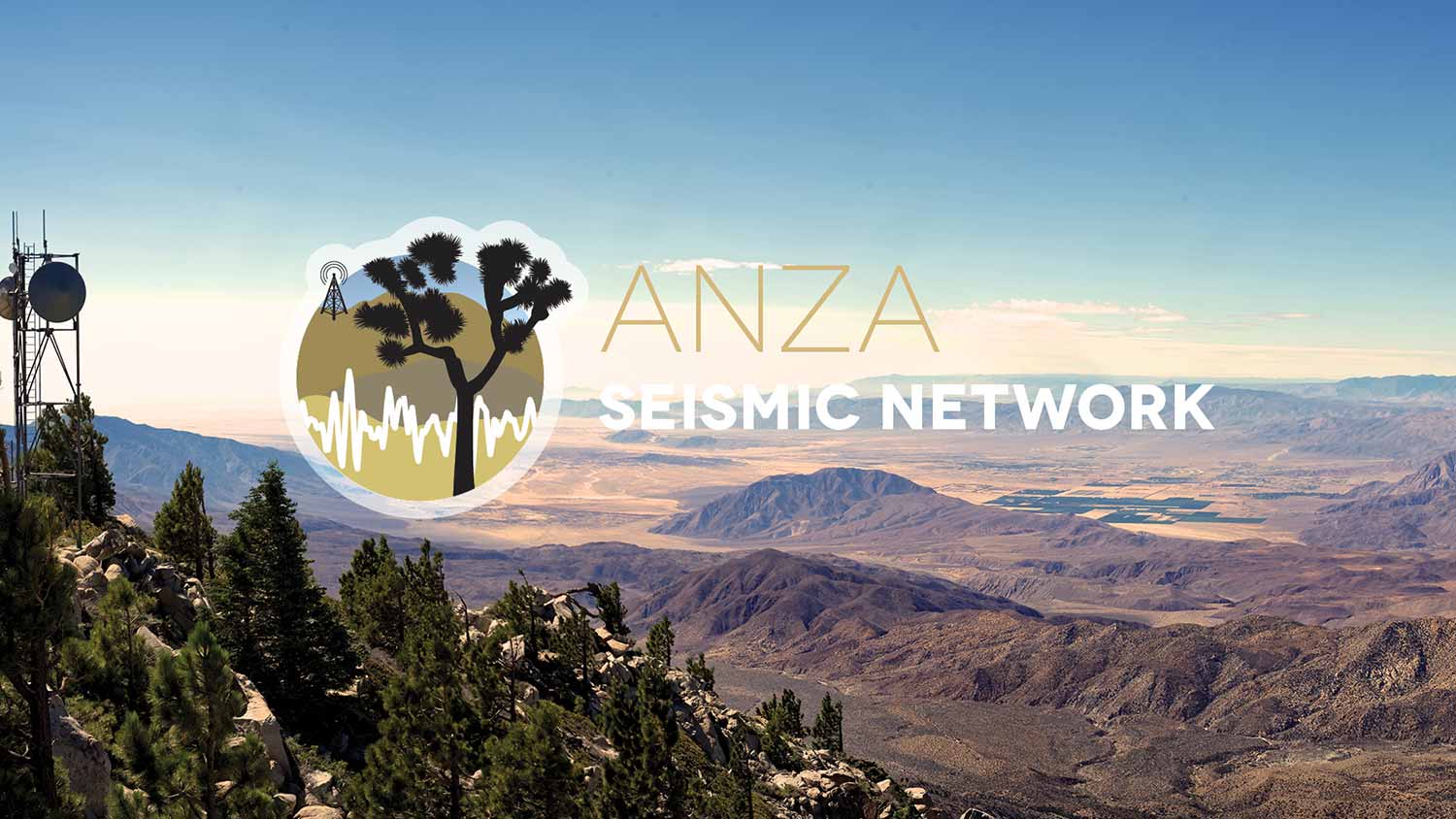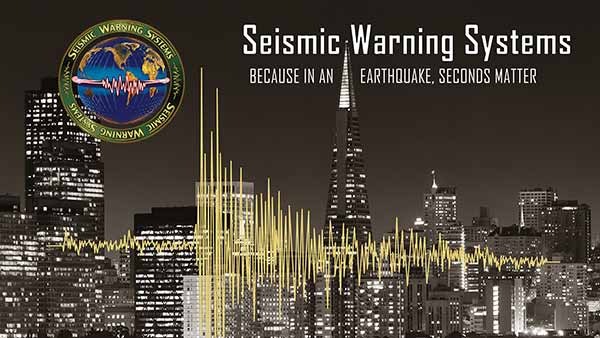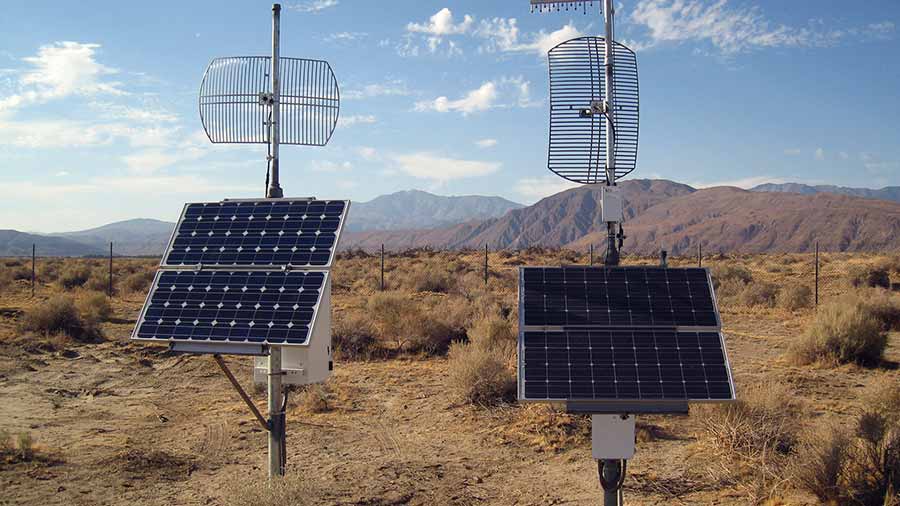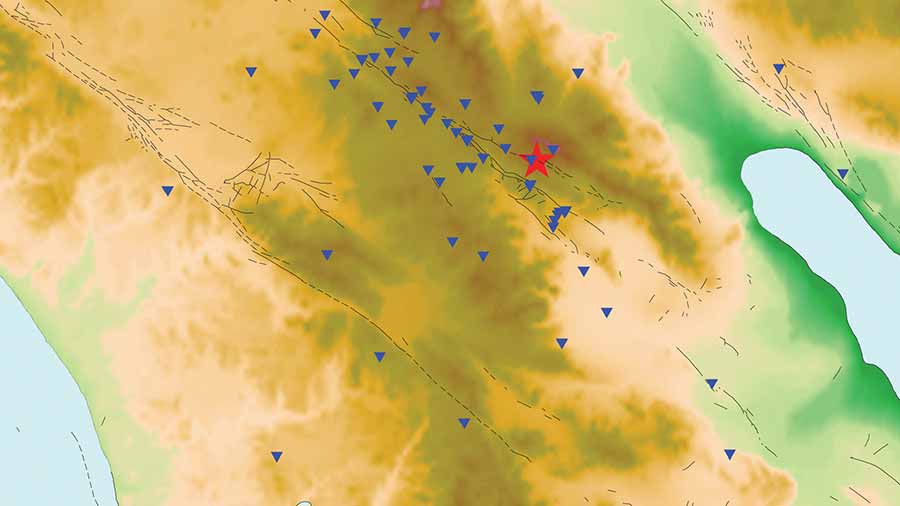Critical Earthquake Monitoring Network Continues Operation with Private Funding
Financial donation by Seismic Warning Systems supports public-private collaboration for earthquake hazards in area of high seismic risk
By:
- Mario Aguilera
Media Contact:
- Mario Aguilera - maguilera@ucsd.edu
- Robert Monroe - scrippsnews@ucsd.edu
Published Date
By:
- Mario Aguilera
Share This:
Article Content

ANZA Seismic Network
A key Southern California earthquake monitoring network operated by Scripps Institution of Oceanography at the University of California, San Diego will continue to operate with funding support from Seismic Warning Systems Inc., a private company that provides seismic detection and earthquake warning systems and services.
A gift of $700,000 by Seismic Warning Systems will sponsor support and ongoing operations of the ANZA Seismic Network, which features 28 earthquake monitoring stations in San Diego and Riverside counties. The ANZA network, a state-of-the art system in operation since 1982, provides the best coverage of the San Jacinto fault zone, considered the most active fault in Southern California.

Seismologists have identified the San Jacinto, San Andreas, and Elsinore faults as having increased probability of rupturing with earthquakes of magnitude 6.7 or higher in the next 30 years. The ANZA Network’s seismic sensors provide critical earthquake risk information for San Diego County’s three million residents. A year ago, funding cuts facing the ANZA network put its operation in jeopardy.
“The ANZA network provides critical data to help detect and transmit earthquake hazard information to protect lives and infrastructure,” said Margaret Leinen, vice chancellor of marine sciences at UC San Diego, and director of Scripps Oceanography. “Seismic Warning Systems has stepped up to provide the kind of critical private funding that makes a difference to our science and our society.”
“We are extremely pleased to support the important work of UC San Diego and Scripps Oceanography,” said George Dickson, founder and CEO of Seismic Warning Systems. “This is a great example of how a collaboration between the private sector and a leading university can advance the science and practical application of regional earthquake warning solutions in the pursuit of saving lives and critical infrastructure.”
Based in Scotts Valley, Calif., Seismic Warning Systems develops and deploys earthquake warning systems and services. The new collaboration will enhance regional earthquake warning deployments and promote education and training for the public to develop an understanding of what will happen in the event of an earthquake, and how to be as prepared as possible.

Seismic stations in the ANZA network.
When Supervisor Greg Cox was informed about the proposed cuts to the ANZA network, he was concerned it would have left only a few USGS real-time stations adjacent to San Jacinto fault, decreasing earthquake warning lead time and significantly reducing seismic monitoring capabilities in the region.
“California is earthquake country and this funding will keep this critical seismic network operating,” said Cox.
“The ANZA Seismic Network is a unique platform for real-time earthquake monitoring and research in Southern California,” said Scripps research geophysicist Frank Vernon, the lead researcher of the network. “The San Jacinto fault zone, with its branches and extensions into the Imperial Valley, remains one of the most active fault zones in the continental U.S., and the Anza seismic gap remains one of the most probable sites for a moderate to major earthquake in the next few years. The ANZA network provides excellent coverage for earthquakes in the San Jacinto fault zone.”
The ANZA network features 21 real-time seismic stations along the San Jacinto fault zone, spanning 120 kilometers (74 miles) from Hemet to the southern end of the fault. Six of these stations are within 600 meters (1,900 feet) of the surface trace of the fault, providing the opportunity for unique, near-fault observations. From a research perspective, Vernon says, the ANZA network is accumulating detailed data on internal fault zone processes necessary to answer critical questions about time variability of seismicity, source mechanisms, and wave velocities.

An earthquake event map for a March 11, 2013, earthquake in Anza (red star) and recording stations (inverted triangles).
“We are extremely pleased to team with the scientists at Scripps Institution of Oceanography,” said Mike Price, chief technology officer at Seismic Warning Systems. “We are looking forward to sharing seismic data and networks, enhancing the monitoring and understanding of regional faults, improving earthquake warning, and collaborating on scientific research.”
In its unique position at UC San Diego to understand and protect the planet, Scripps Oceanography is developing new, science-based solutions to a host of daunting challenges and opportunities—climate change impacts and adaptation, human health and the oceans, resilience to hazards, and innovative observation for the planet.
Additional comments about the ANZA Network:
“The Anza seismic network is arguably the highest-quality seismic network on Earth. The last 20 years of research in seismology and related fields has dramatically increased our fundamental understanding of earthquake physics. Data from ANZA have played an important role in these developments.”
— Professor Gary Pavlis, Department of Geological Sciences, Indiana University
“The ANZA network has provided real-time data for decades through a dedicated wireless network. The network, now part of the original NSF-funded High Performance Wireless Research and Education Network (HPWREN), has been remarkably stable with data delivery reliability in excess of 99 percent. The open network continues to provide academic and government users of seismological data with important data from Southern California for both research and operational seismology through modern, well-documented software. I fully expect the network to grow in coverage in the future while adapting to the newest cyberinfrastructure.”
— John Orcutt, Distinguished Professor of Geophysics, UC San Diego/Scripps Institution of Oceanography/Cecil and Ida Green Institute of Geophysics and Planetary Physics
“The ANZA seismic network produces high quality continuous waveform data from stations covering the most seismically active region in California. These data include both broadband and strong motion, and are used by seismologists worldwide to study earthquake source physics and wave propagation phenomena both in the near source, as well as from large global earthquakes. While this network is poised to record the highly anticipated magnitude 6-7 Anza Gap event on the San Jacinto fault zone, it is also providing a wealth of data from thousands of smaller events that have been used for more than 25 years to train the next generation of seismologists.”
— Jamison H. Steidl, Ph.D., Research Seismologist, Earth Research Institute, Adjunct Professor, Earth Science, UC Santa Barbara
Share This:
You May Also Like
UC San Diego is Strengthening U.S. Semiconductor Innovation and Workforce Development
Technology & EngineeringStay in the Know
Keep up with all the latest from UC San Diego. Subscribe to the newsletter today.



